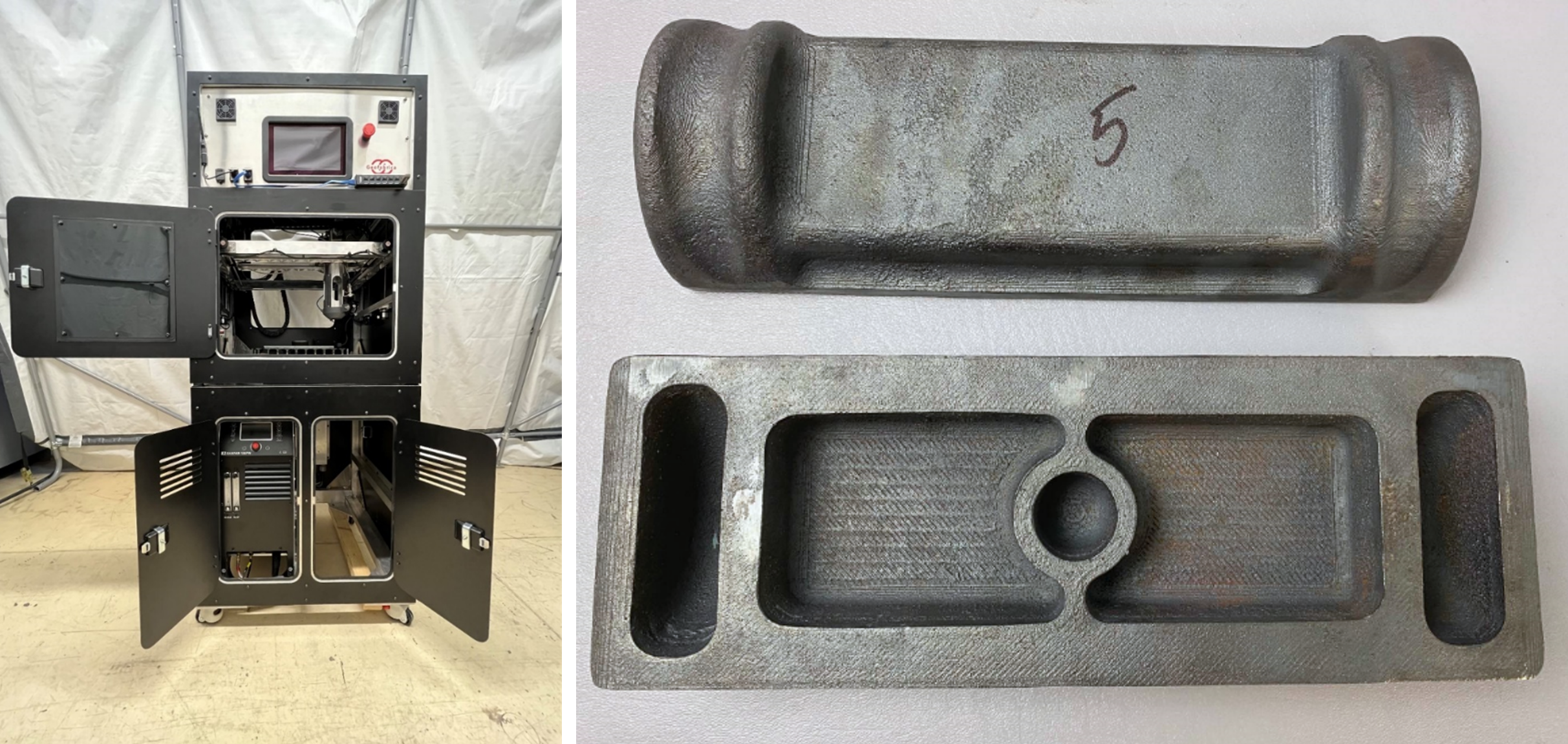


Left: The final deliverable expeditionary printer
Right: A casting part reverse-engineered and produced using the QLVP process
Problem
The U.S. Army faces ongoing operational readiness challenges due to part obsolescence and the inability to rapidly obtain service parts for legacy systems. This is especially true in theater. DoD-quality legacy replacement parts are expensive and difficult to source due to low volume demand and up-front costs for qualification and set up. The timely and cost-effective provision of replacement parts also places a high burden on supply lines affecting every part of the Army’s supply chain.
Objective
The objective of this project was to improve the operational readiness of the Army’s Ground Vehicle Systems by enabling faster and lower-cost access to replacement parts. The program sought to design systems for two critical points of need: at forward operating bases in theater (to permit the fabrication of provisional parts with minimal demand on logistics supply), and at small-to-medium manufacturing businesses (to enable cost-effective, on-demand supply of qualified replacement parts in low lot sizes).
Technical Approach
Geofabrica adapted both proprietary and third-party additive manufacturing (AM) technology and methods to meet the application objectives of this project. For the provisional forward operating base need, wire-arc additive manufacturing (WAAM) technology was developed and prototyped to permit the fabrication of metal parts in an unsheltered expeditionary environment. A prototype printer was demonstrated for Army Product Manager Sets, Kits, Outfits, and Tools for consideration for inclusion in the Army’s Metal Working and Machining Shop Set (MWMSS).
For the Qualified Low-Volume Production (QLVP) system, material extrusion and binder jetting were employed for intermediate steps in the casting process. Purpose-built printers were used to generate patterns to produce sand molds. A separate purpose-built multi-material printer was used to fabricate sand molds directly. These molds and patterns were then provided to small manufacturers for use in the next steps of the casting process. Post-processing, inspection, and other qualification activities were performed on the final parts.
Accomplishments
Geofabrica developed an Expeditionary Additive Manufacturing system (xAM) capable of printing near-net shape provisional-quality metal parts using Plasma Arc Welding (PAW) WAAM. This printer was designed specifically to be transportable within the MWMSS and for operation in-field, with consideration given to safety, logistics, performance in austere environments, usability for the Army Allied Trades Specialist, feedstock, power, performance flexibility, and predictability. It is designed to be useable either inside the expanded MWMSS shelter or outside the shelter under a canopy. Open-source software interfaces were used to facilitate extensibility and transition of system support to the Army.
The QLVP portion of this project created a technical foundation for the production of qualified replacement parts for Army and other defense needs using small manufactures. Geofabrica demonstrated the production of metallic parts in small lot sizes using AM to produce tooling for conventional processes. AM systems were refined, and AM/digital manufacturing-based processes were developed that reduced non-recurring expenses and time requirements making production feasible for cast metal parts in lot sizes of 1 to 20 parts. Quality and repeatability could be cost-effectively achieved such that the processes could be qualified.
Project Participants
Project Principal

Other Project Participants
- U.S. ARMY DEVCOM Ground Vehicle Systems Center (GVSC)
- U.S. ARMY PdM SKOT, PEO CS&CSS
Public Participants
- U.S. Department of Defense
